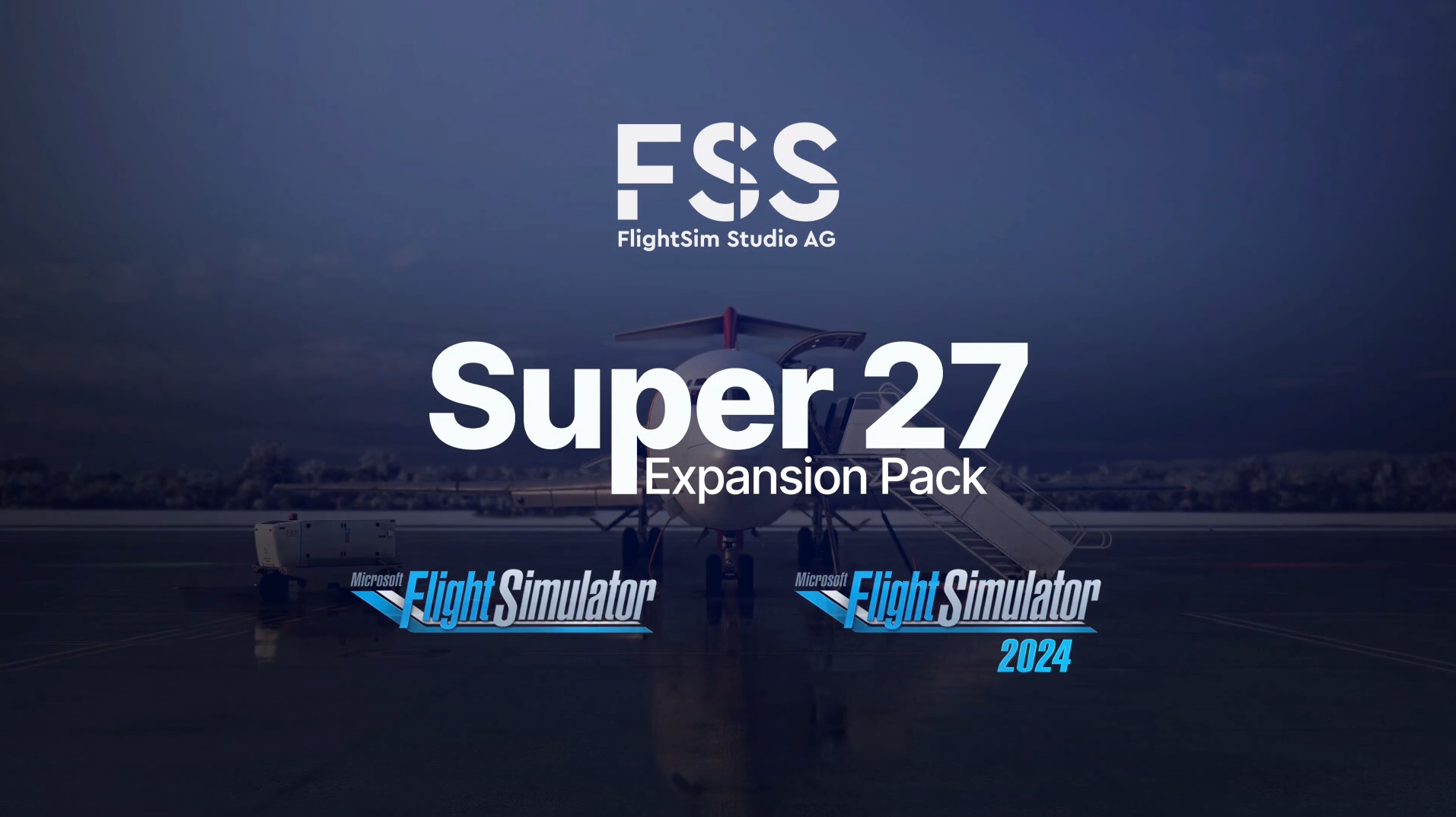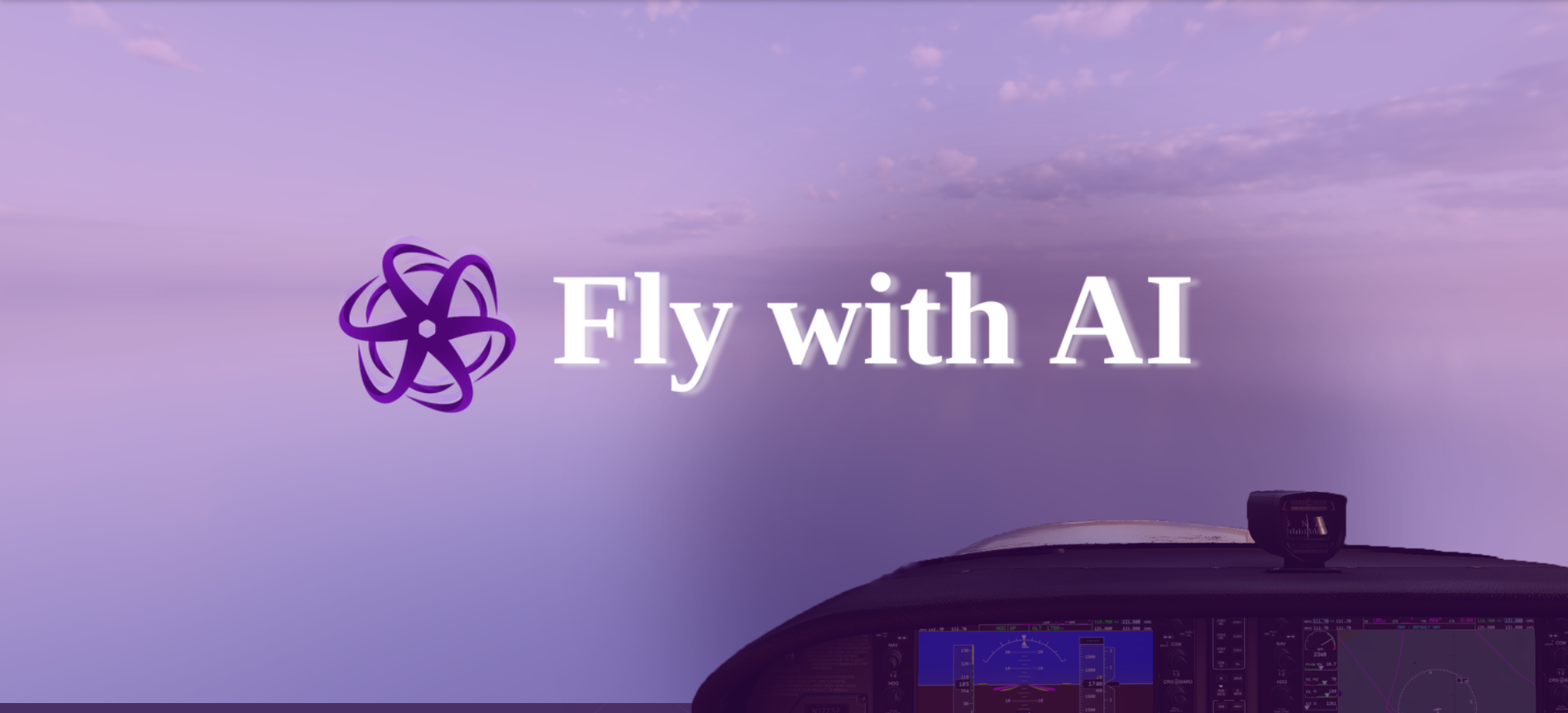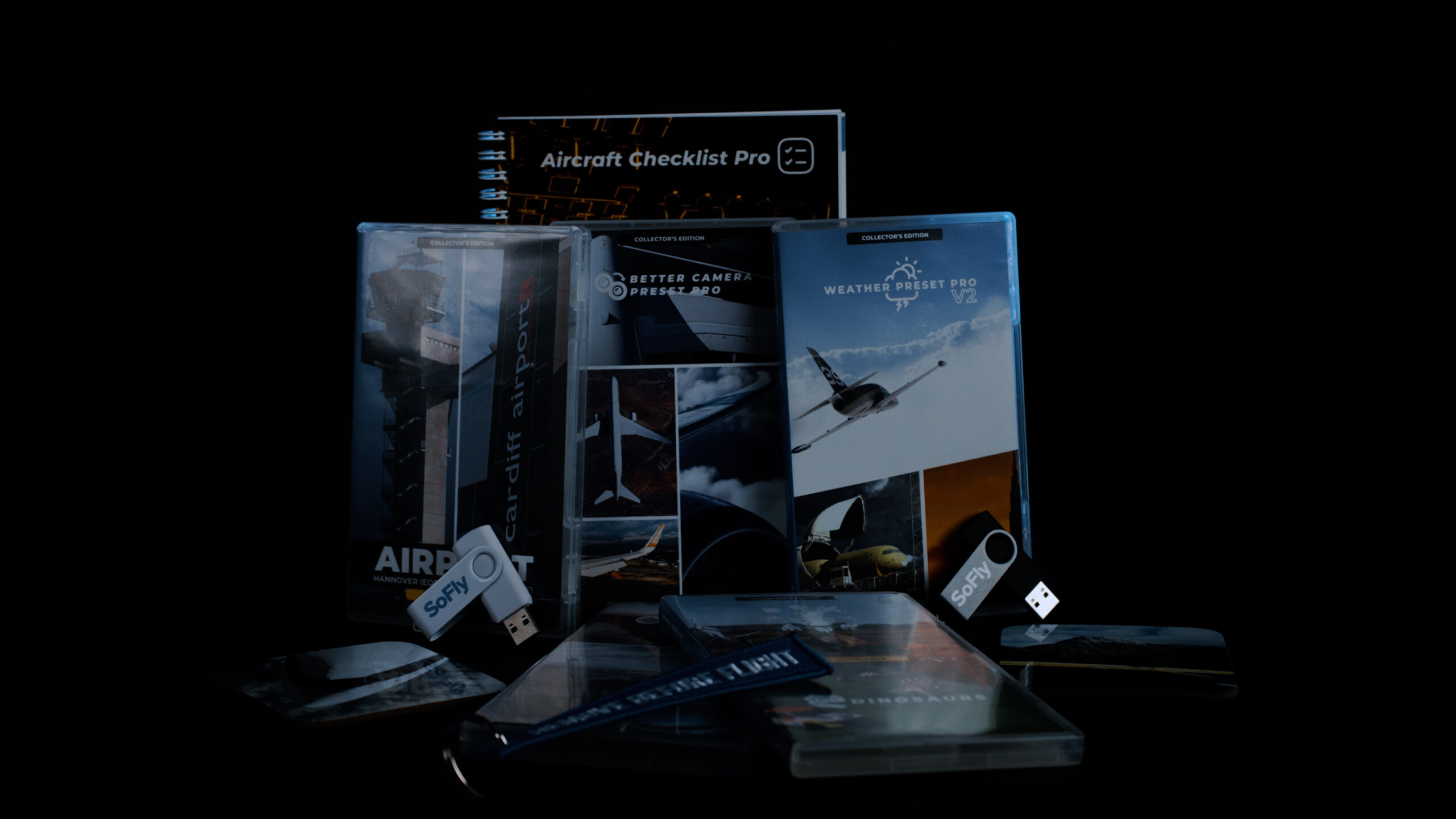CSS, or Commercial Simulation Systems, has released its first aircraft for Microsoft Flight Simulator 2020, the Boeing 737-500. From the “unique sales model” featuring options for monthly, annual, and lifetime licenses, to the harshly criticized pre-release trailer and nearly two-week-long delay, this release has undoubtedly been one of the most controversial in recent flight sim history.
As a retro jet enjoyer myself, I was keen to know if CSS could push past the controversy to deliver the quality 737 Classic experience that I, and many others, had been waiting for. This first impressions article will give a basic overview of what the CSS 737-500 has to offer and my experience with it over the past few days. An in-depth review further analyzing the aircraft’s system depth and other technical aspects will come in the future.
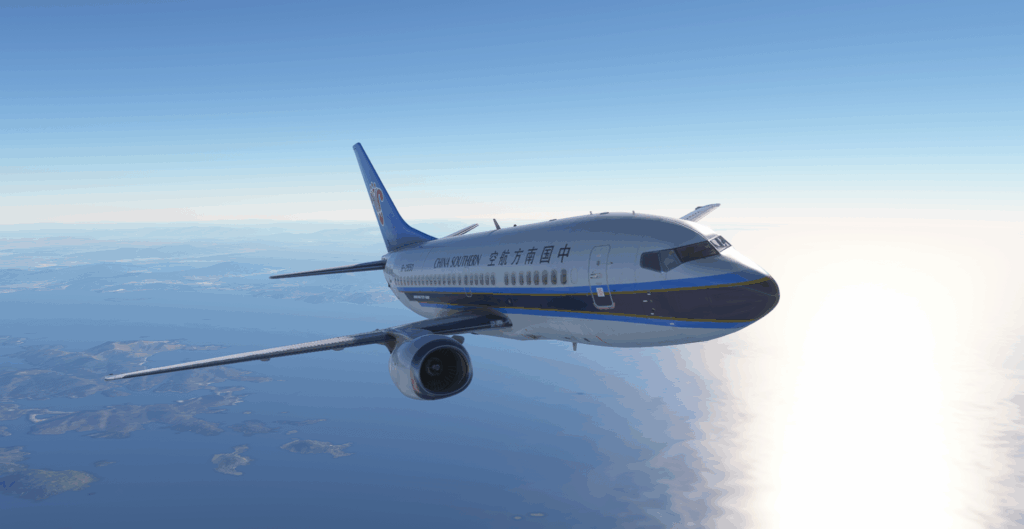
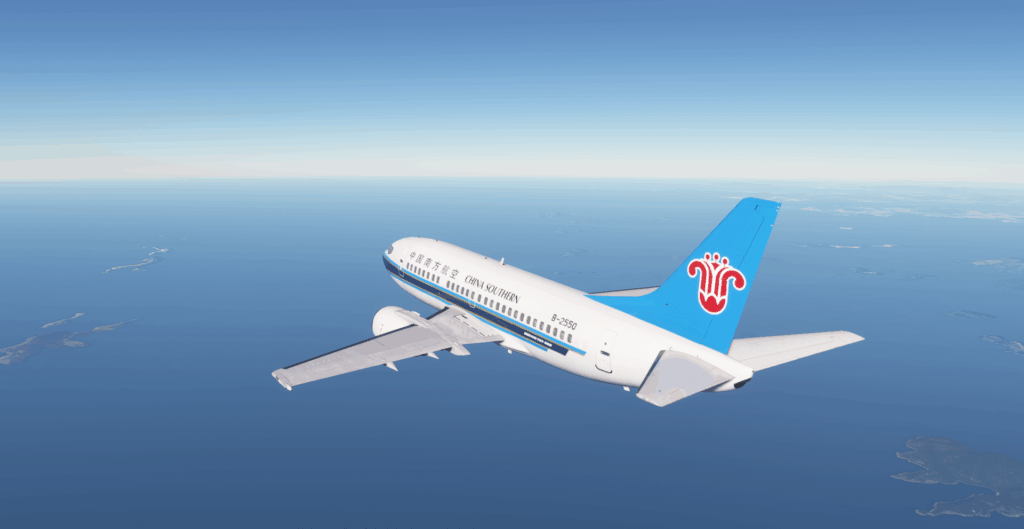
The All-Too-Common Release Fumbles
The CSS 737-500 was originally scheduled for release on May 18, 2025, but after noticing that many of the streamers the developers sent the aircraft to had trouble getting the systems to launch, the release was postponed to fix these issues. Nearly two weeks later, on May 30th, CSS finally released the aircraft.
However, in what seems like an all-too-common trend nowadays, the release was plagued with server and activation issues. Many people were not receiving confirmation codes to create their accounts, couldn’t select a purchasing option in the launcher, or had issues with major bugs. CSS estimated the server load on release day to be around two to three times its user base on Discord, but as it turns out, even that amount was not enough. Thankfully, the next day, the servers recovered, most customers were able to get into the 737-500, and those who bought the subscription received an additional day as compensation for the troubles.
My First Experiences
To purchase and install the CSS 737-500, you must first download the CSS launcher from its website. Within this launcher, you register your email, and then select a product to purchase and your desired subscription option. Right now, the only product available is the 737-500 for MSFS 2020, so those of you who have moved on to MSFS 2024 will have to wait for an update before you can use it there. You can also use the launcher to download all the official liveries (including SAS, Air France, Lufthansa, Southwest, and more) and get support should you encounter any issues.
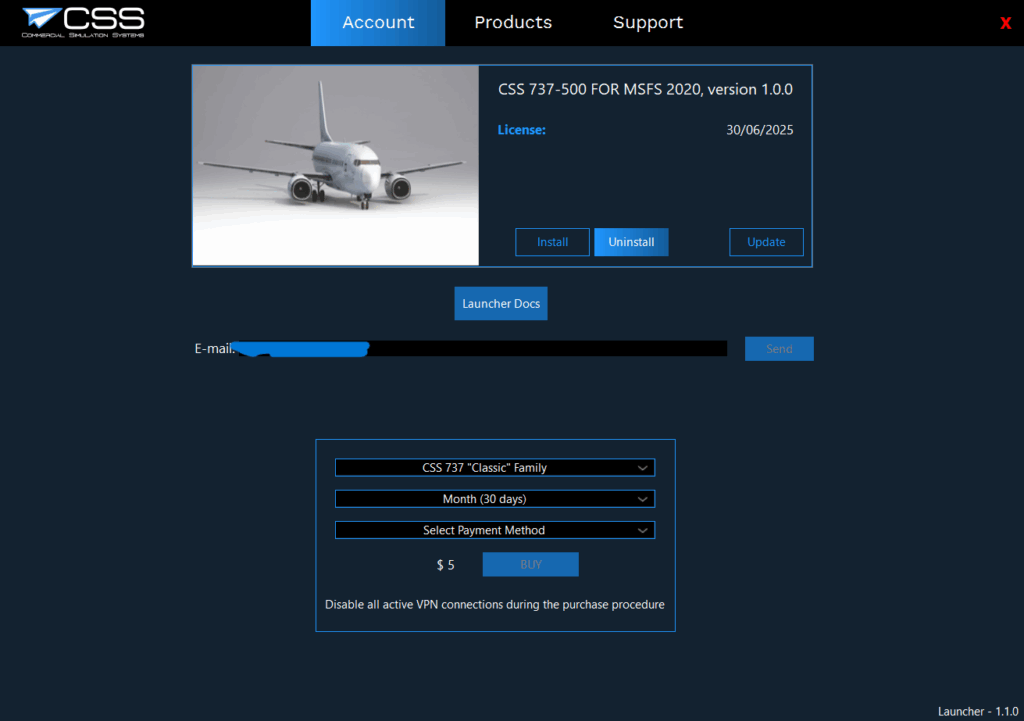
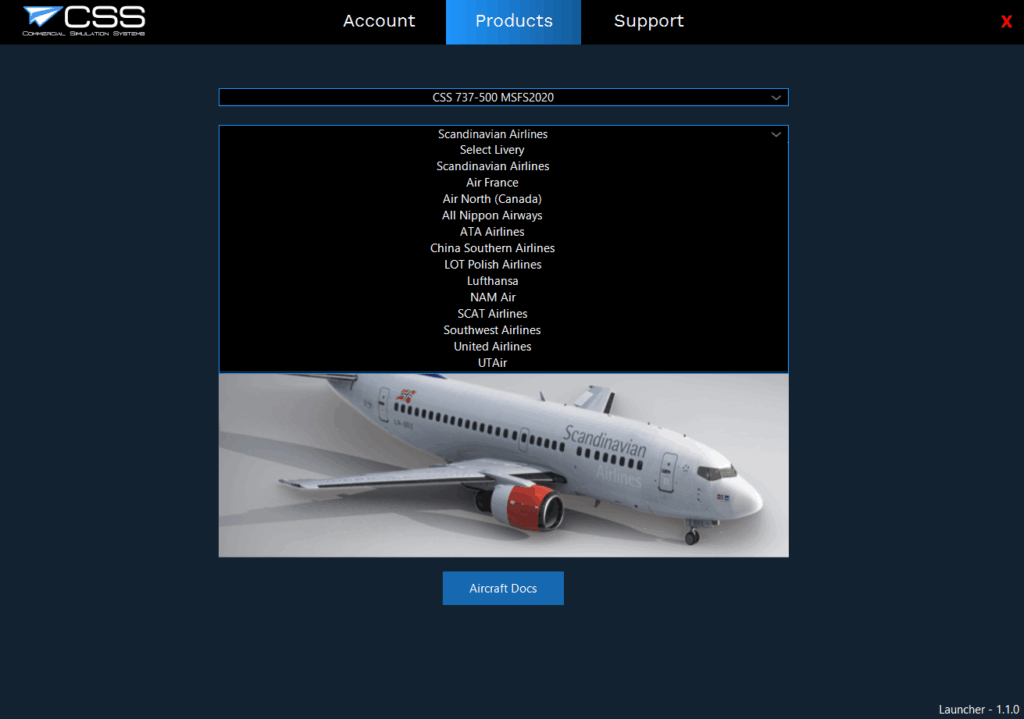
When I first got the launcher, I put my email into the email box, after which I was supposed to receive a confirmation code to register and then purchase the aircraft. To my surprise, the launcher skipped all those steps and simply let me install the plane without having spent a single cent on it. I thought that surely it had just installed the model of the plane, but that it would fail to start up the systems upon checking my license status with CSS’s servers.
I started up the sim, loaded into the plane, and to my absolute shock, the systems started up and I was able to use it as if I had paid for it. Of course, this taking place on launch day, this launcher glitch almost certainly had something to do with the server issues. It’s still a really strange thing to happen, and something that I had never seen or heard of before.
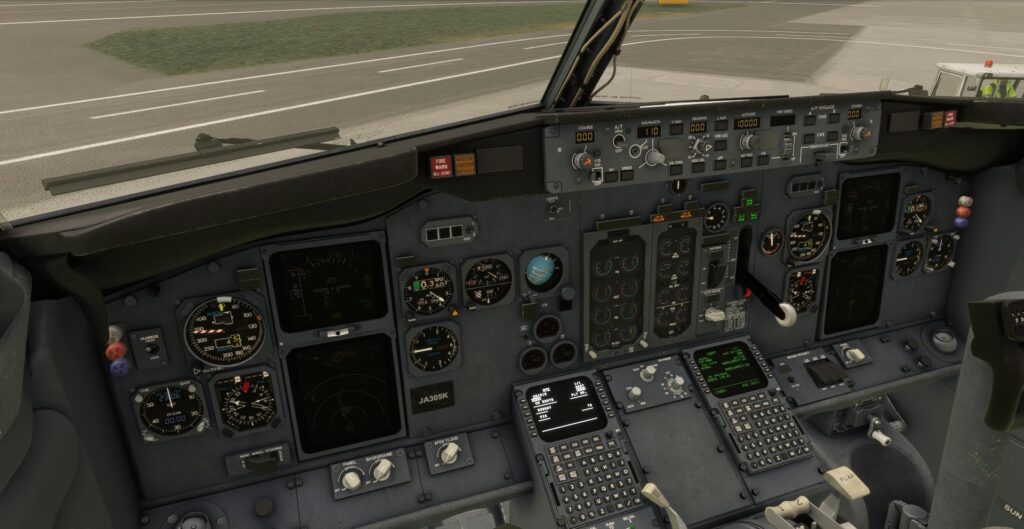
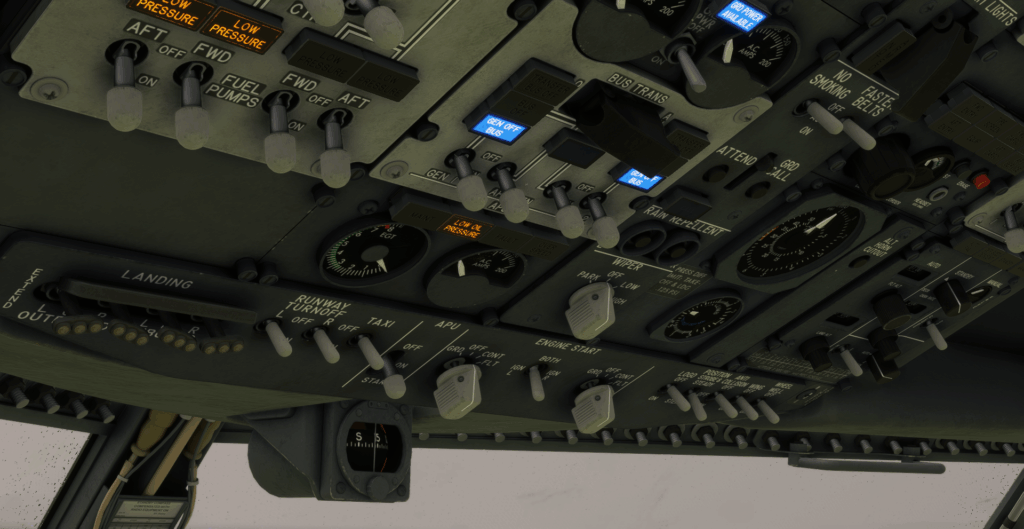
What awaited me, however, was not great. In my first attempt at flying the CSS 737-500, the captain’s FMC was flickering white and green, the APU wouldn’t start, and the fuel pumps wouldn’t turn on. The EFB does have an option for an Air Start Unit, however, it seems that it isn’t available yet, so I wasn’t able to start up the plane. I restarted the flight and tried again; this time, the APU did start up, but the engines refused to start, and seemed to flicker between an on/off state. Thinking I had probably downloaded a corrupted version of the plane due to the server issues, I decided to wait until the next day for things to get more stable.

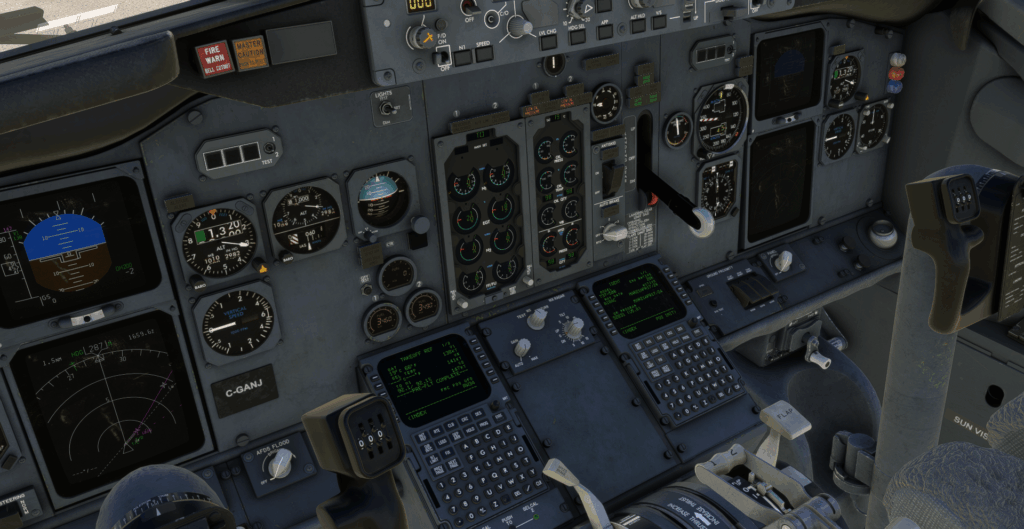
My First Actual Flight
The next day, the server issues were at least somewhat fixed, and my “free” license had, expectedly, expired. I purchased the aircraft, reinstalled it, and tried to go for another flight. This time, all the issues I mentioned previously were gone, and I was able to start up the plane, taxi, and take off without any problems.



Once in the air, however, things started to go wrong again. With LNAV activated, the autopilot would turn so hard that the plane would get to around 40 degrees of bank, prompting a “bank angle” warning from the GPWS, and causing the plane to descend. Changing the bank angle limit on the MCP seemed to have no effect either, so I decided to try to use heading mode to see if it could at least fly straight with that. At first, it seemed to have the same issues, but it did eventually settle into the heading I gave it after overshooting some three or four times.
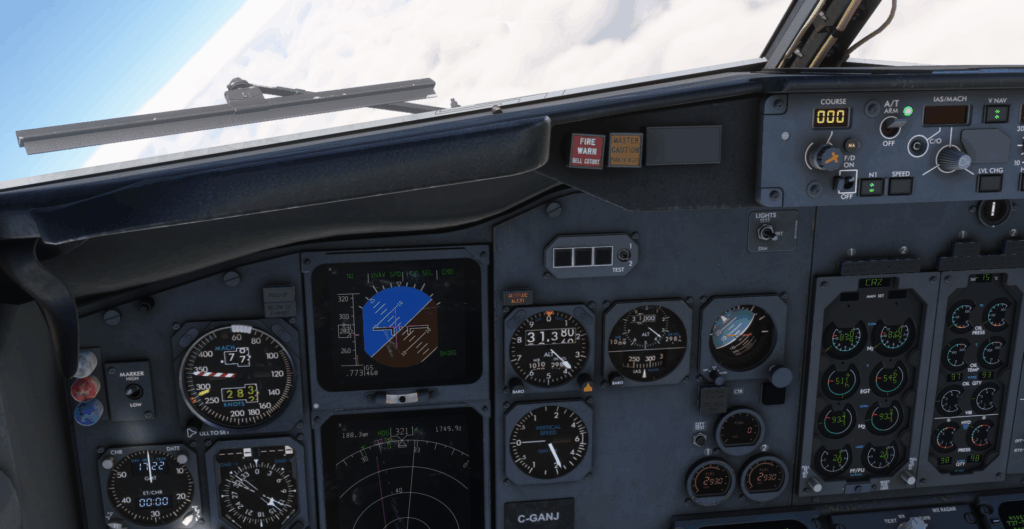

Having to deal with the autopilot made me miss the top of descent on my short flight, so, knowing that the AP couldn’t be trusted, I decided to fly my descent manually, though with the autothrottle still engaged. While on descent, the aircraft went past the speed target, but for some reason, the autothrottle still kept the power on, and after realizing that even the autothrottle would be giving me issues, I went fully manual all the way down. Thankfully, the rest of the flight went as expected.
Subsequent Flights, Similar Issues
Despite my first flight being rather disastrous, I thought it would only be fair to give it more than one chance. These were, however, rather mixed. On my second flight, there were actually no issues with the autopilot; it behaved mostly as expected, didn’t go past 30 degrees bank, followed the flight plan, and the VNAV executed the descent well. I did, once again, have problems with the Autothrottle holding speed at certain points during the descent, though it mostly behaved as expected.
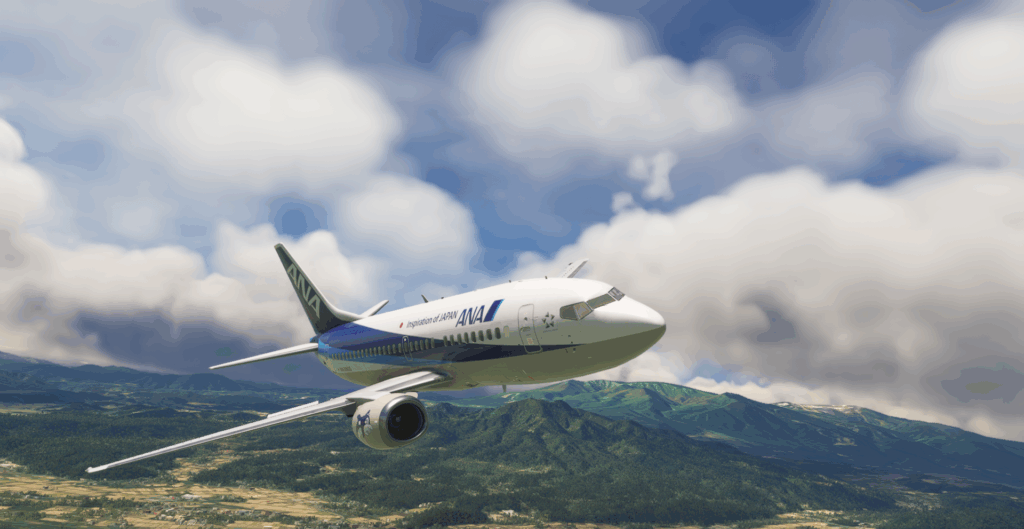
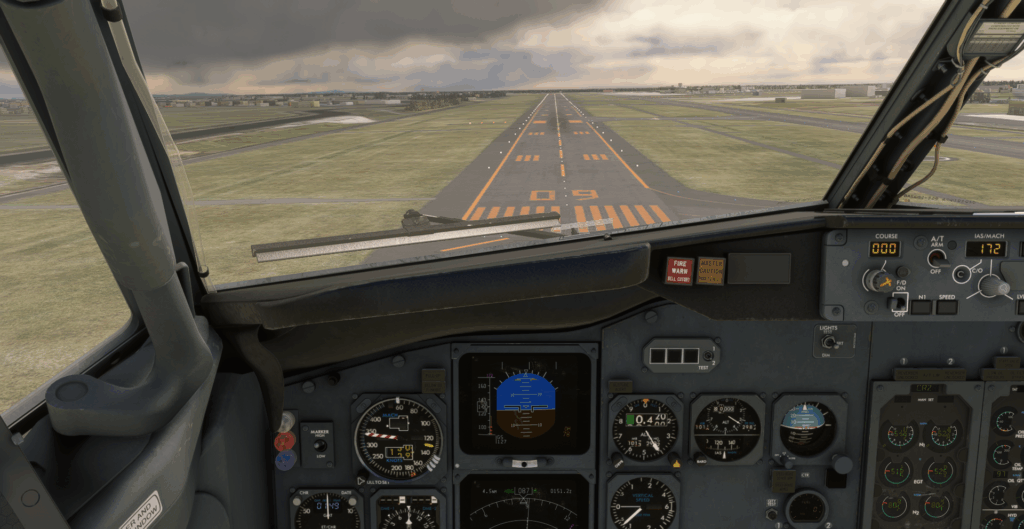
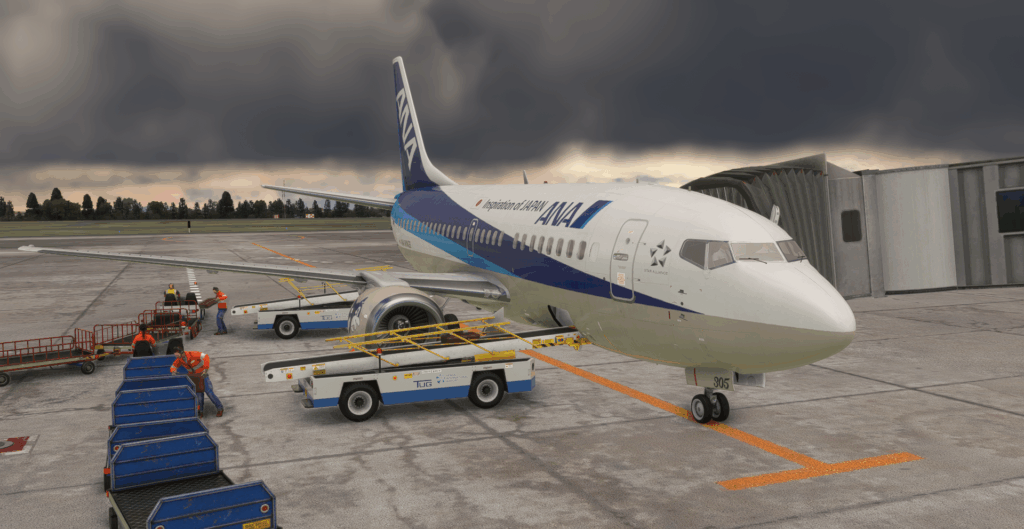
I started my third flight with the optimism that it would perform as well as it did on the second flight. I departed the airport and, since it had no SID, set a direct-to to my next waypoint. This is when the problems started, as it seems that direct-tos create turns too steep for the plane to handle, which makes the autopilot chase the line so hard that it completely ignores the bank angle limit and turns to nearly 40 degrees. In fact, this was the case with any steep turn along my flight path; the plane would start the turn too late, overcorrect, overshoot the turn, and then wobble left and right until it was finally centered on the path.

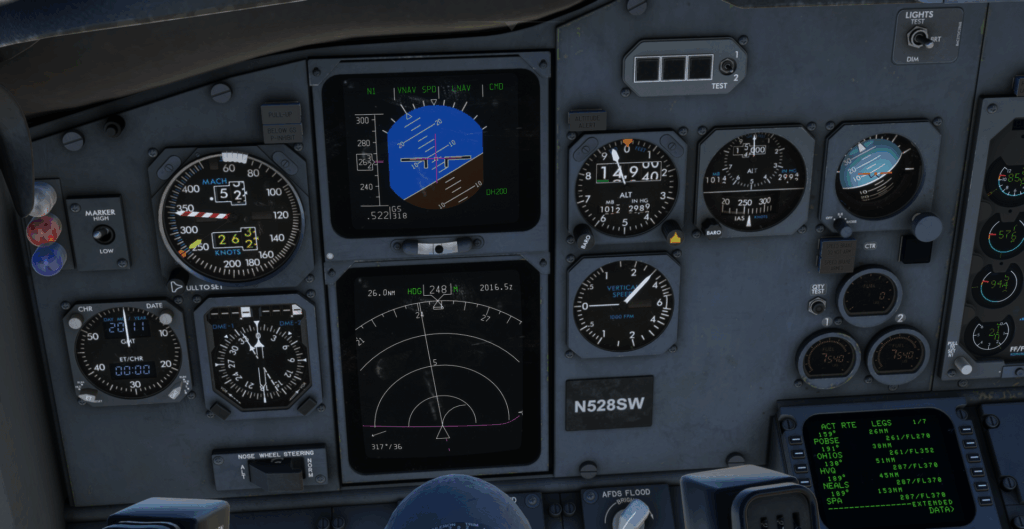
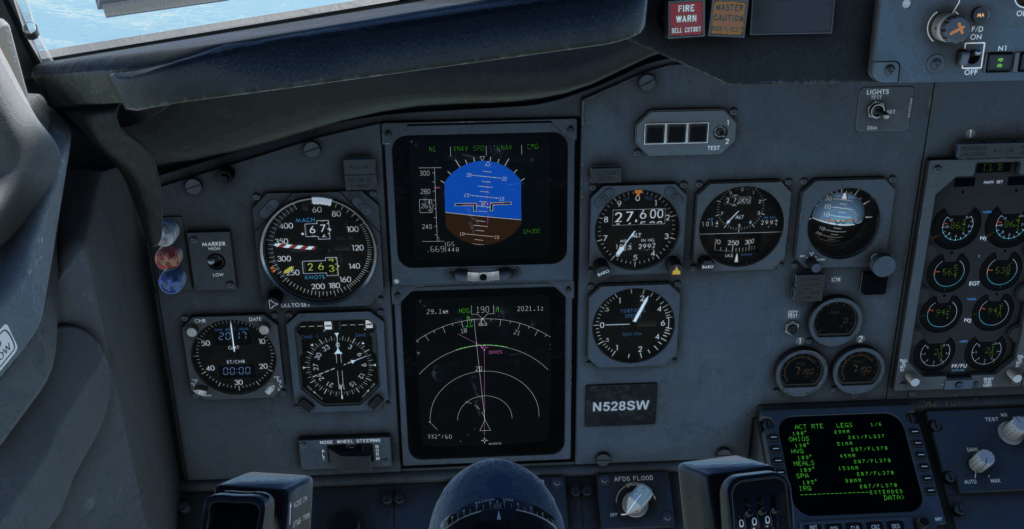
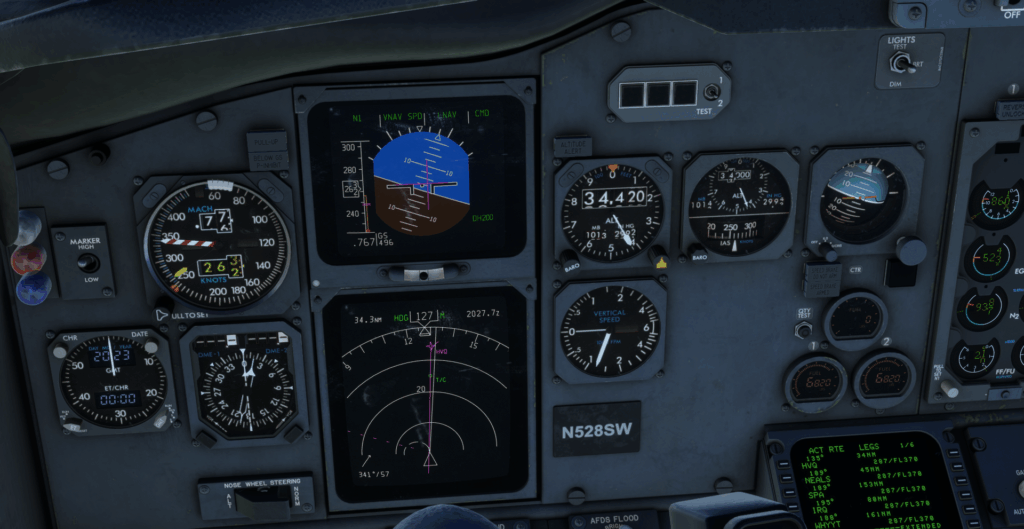
Visuals
One of the most harshly criticized aspects of the CSS 737-500 has been the visuals. In my opinion, I don’t think the cockpit textures and modeling are bad. Most materials and textures are high resolution and look authentic. I especially like the look of the digital displays; the way the lines on these are drawn and the fonts used for the numbers and text are crisp. I also really like the animations in the cockpit, such as the way the analog dials have momentum when they move, the glareshield vibrating on the take-off roll, and the master warning and caution buttons rotating slightly when pressed.
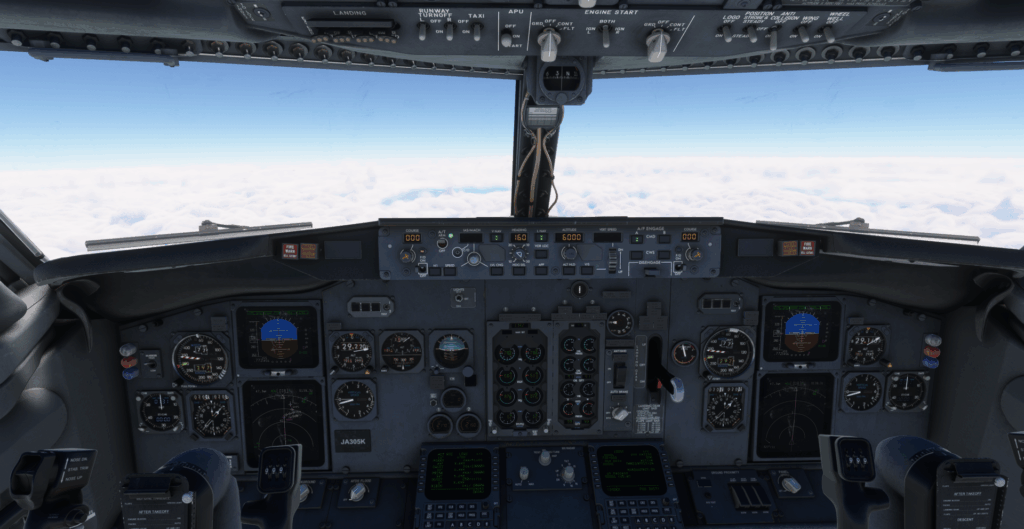
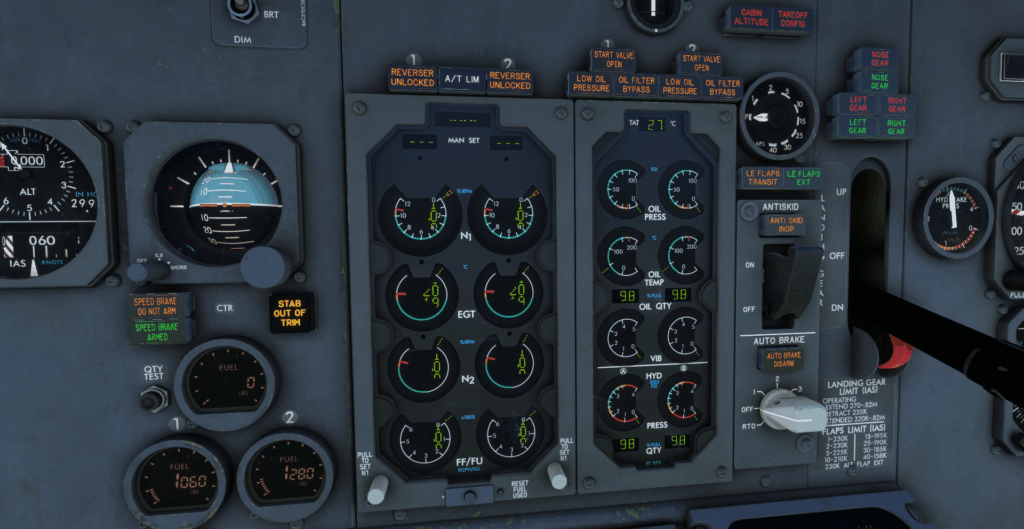
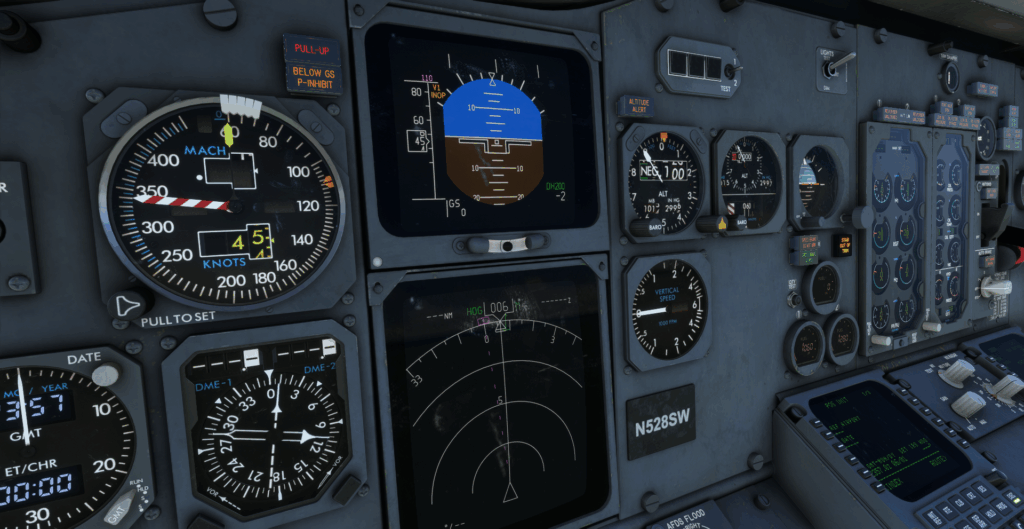
I don’t think the cabin is too bad, either. The seats could have more detail, and the materials used in some areas could be improved, but for an area as trivial as the cabin, I think it’s good enough. There are a few interactive things in the cabin area, like the crew’s cabin lighting controls and the lavatory, which, yes, does flush.
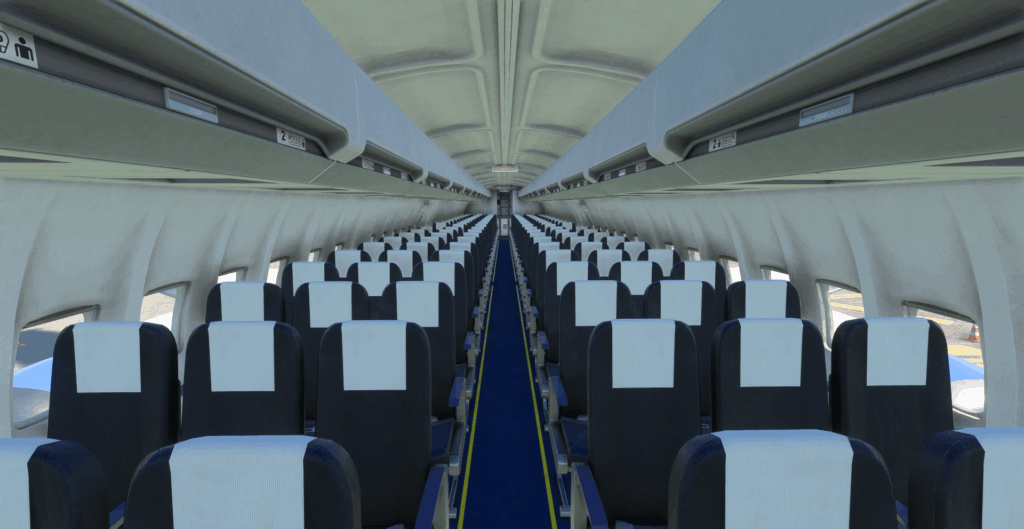
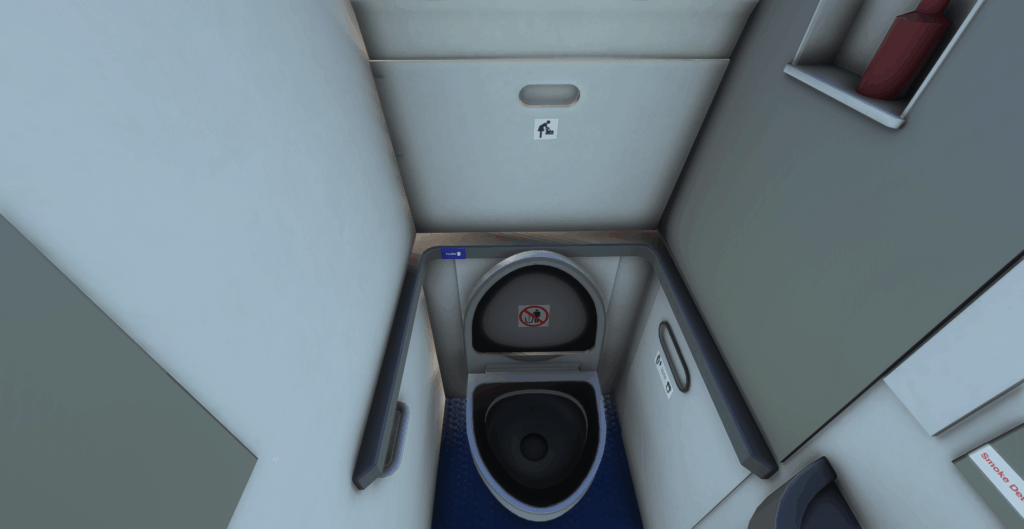
The exterior is not quite as good as the interior. I think what really lets the exterior down is the modeling quality near the nose and windows and the resolution and quality of some of the materials and normals. The tip of the nose seems to hang too low and is not quite pointy enough, and the windows have a white tint on them. The low resolution and quality of some of the materials and normals, which look especially flat and lifeless on the exterior, are also a letdown.
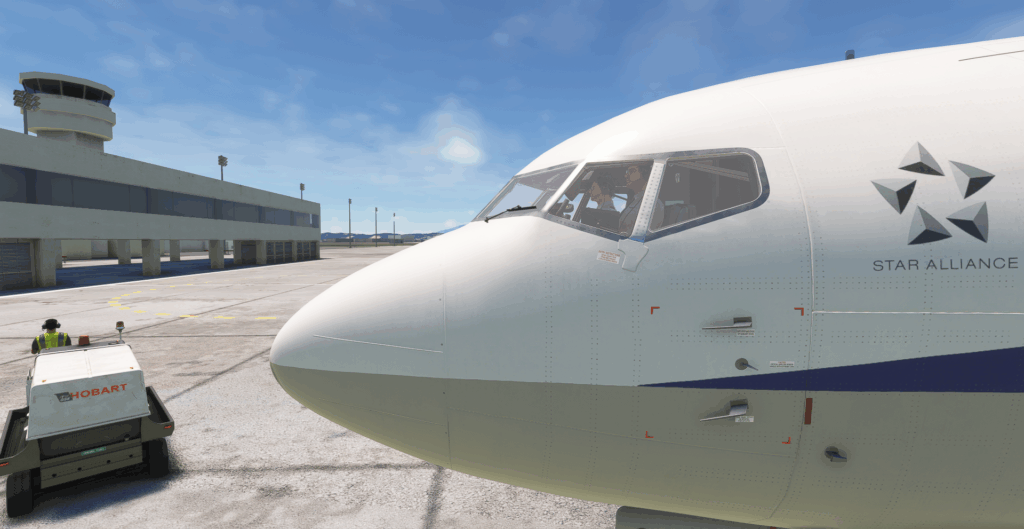
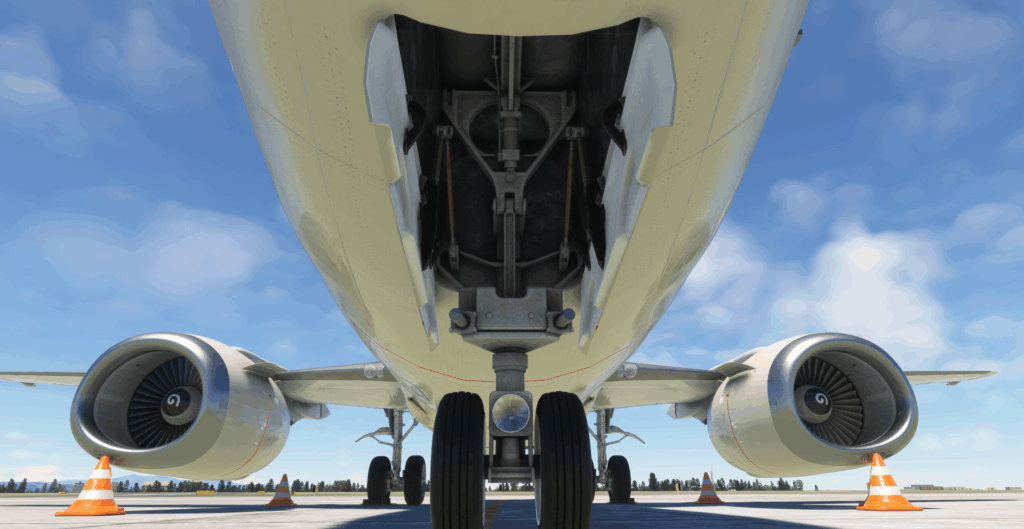
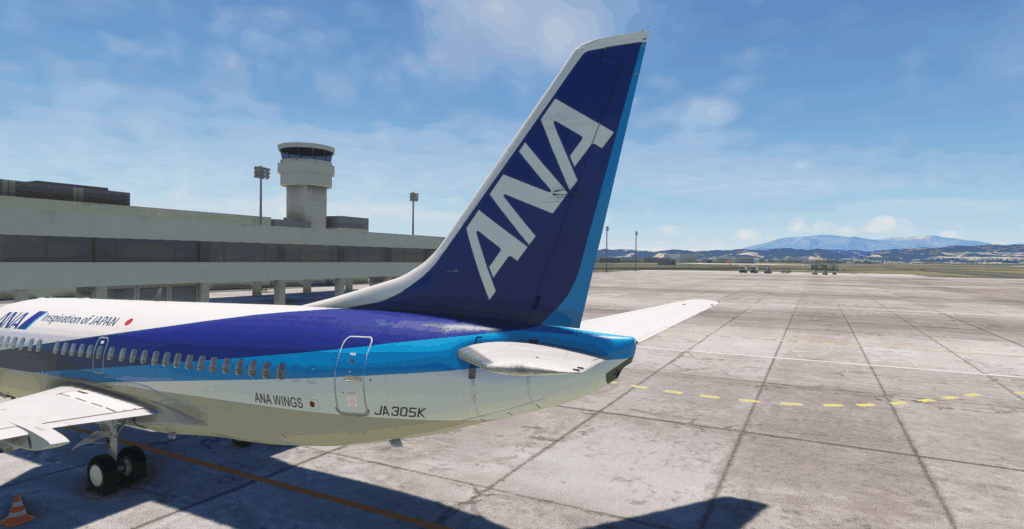
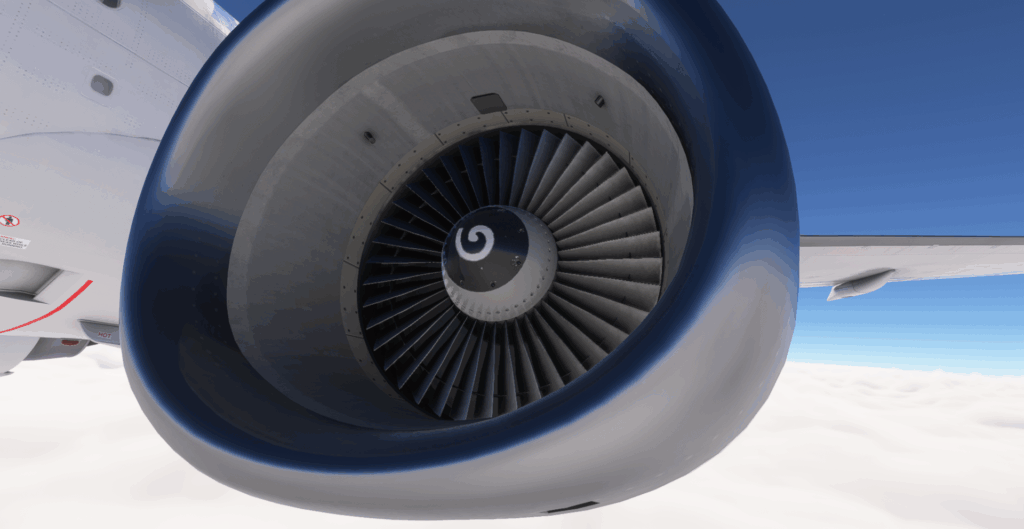
My standards for the quality of the models and textures aren’t the highest, so I’m sure others could find a lot more to complain about. However, for an add-on at this price point and with today’s standards, I was expecting better.
EFB
The CSS 737-500 comes with an EFB that you can use for weight management, ground equipment and doors, take off and landing performance, simBrief and Navigraph charts, and even for playing cards. You can use the settings to select which apps show up on the home screen and select other things like the aircraft’s weight units and 8.33 kHz spacing for the radios. All of the apps seemed pretty standard, and I like that the Ground Ops app syncs with your simBrief flight plan’s weights automatically.
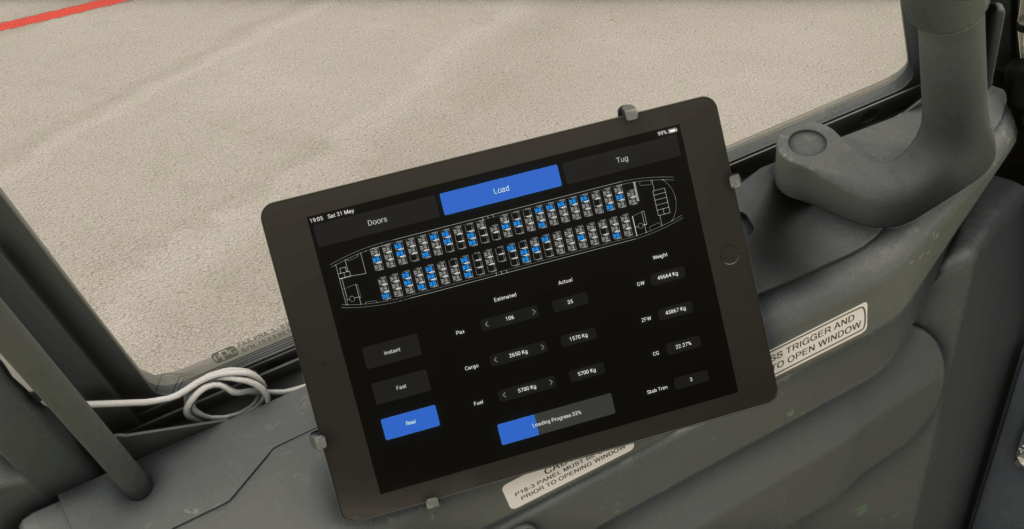
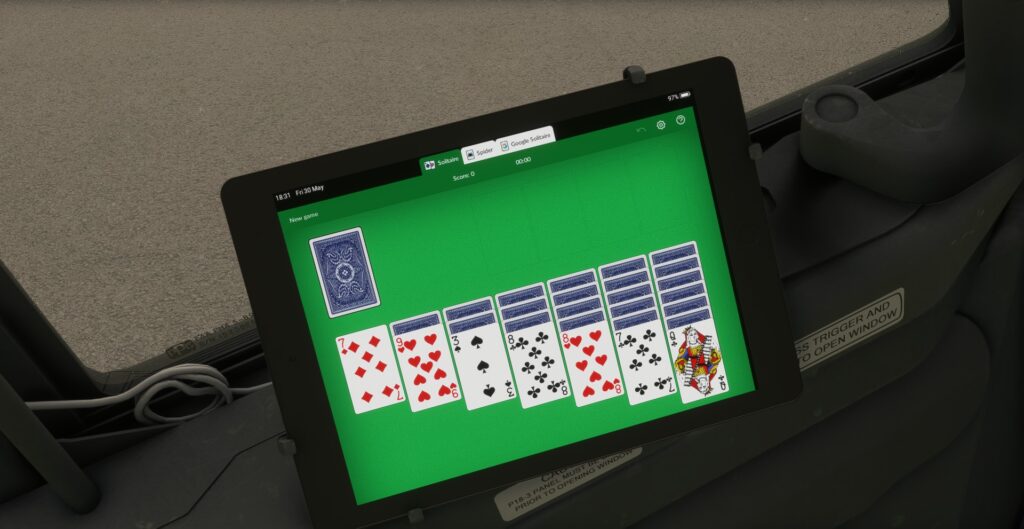
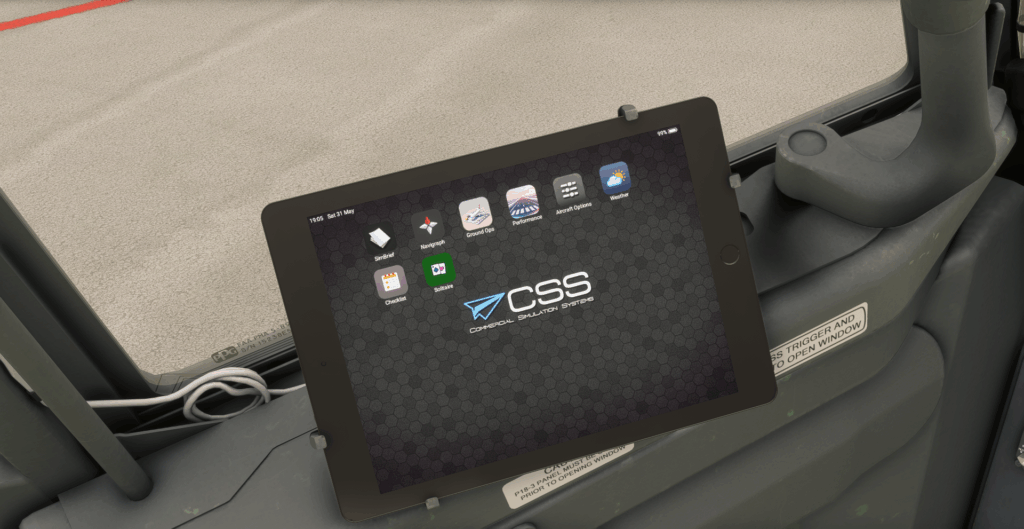
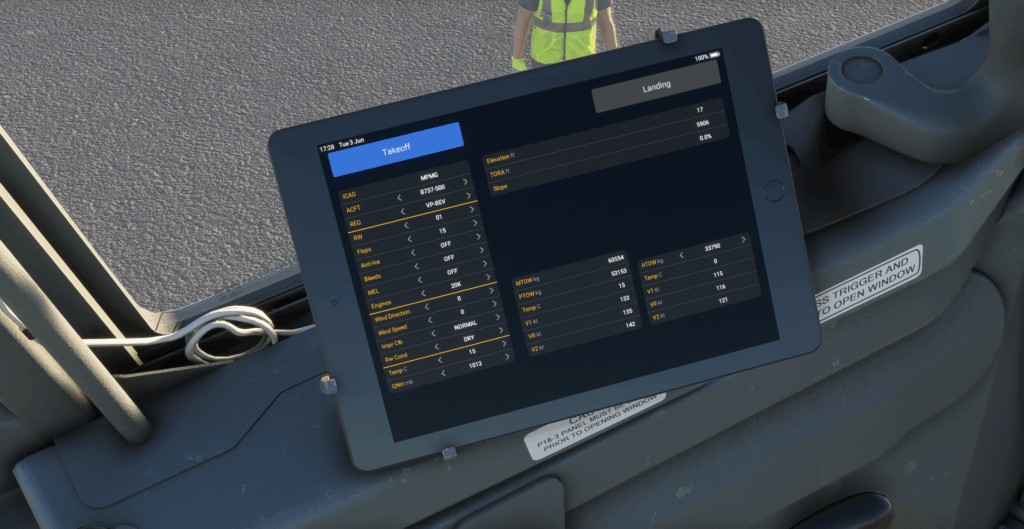
One thing that could be improved is the Performance app. I wish the airport selections in this app would sync with the simBrief departure and arrival airports when you start up the app, as currently, you must manually type in the ICAO code of the airport you are calculating the performance for. I also wish that you could change the weight and altimeter units, as it seems that they are stuck in kg and hPa/mb, regardless of what weight unit you’re using in the plane.
Sounds
The sounds in this aircraft are, as much of the rest of it, a mixed bag. The engine sounds in the cockpit, as far as I can tell based on some of the videos available online, are relatively accurate to the real plane. On the outside, however, there is a constant rumbling noise that plays when the engines are on, and the engines themselves are so quiet that it’s hard to notice the changes in noise that occur when power is added. Another odd thing I noticed with the exterior sounds is that when the APU is shut off, there is no wind-down sound; you simply hear the turbine running at operating speed, and then the sound just stops.
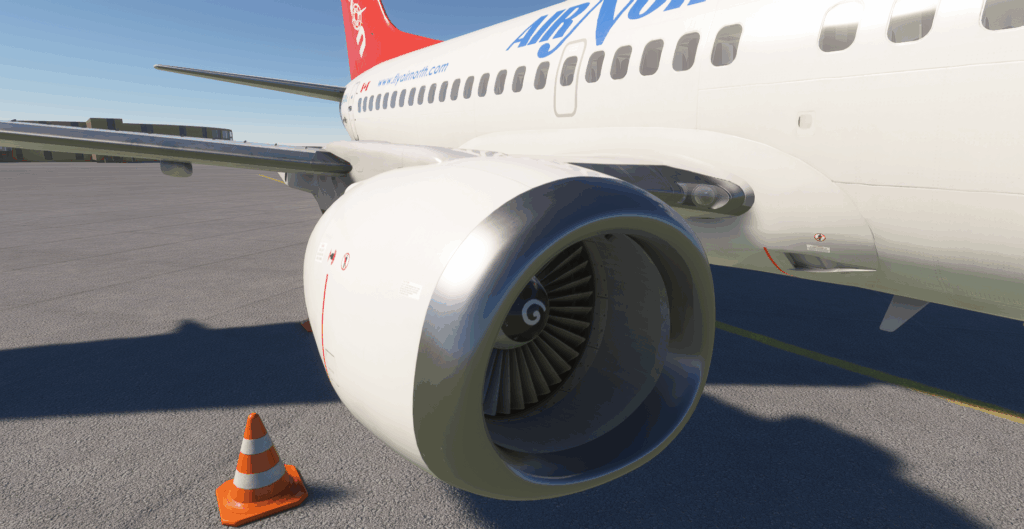
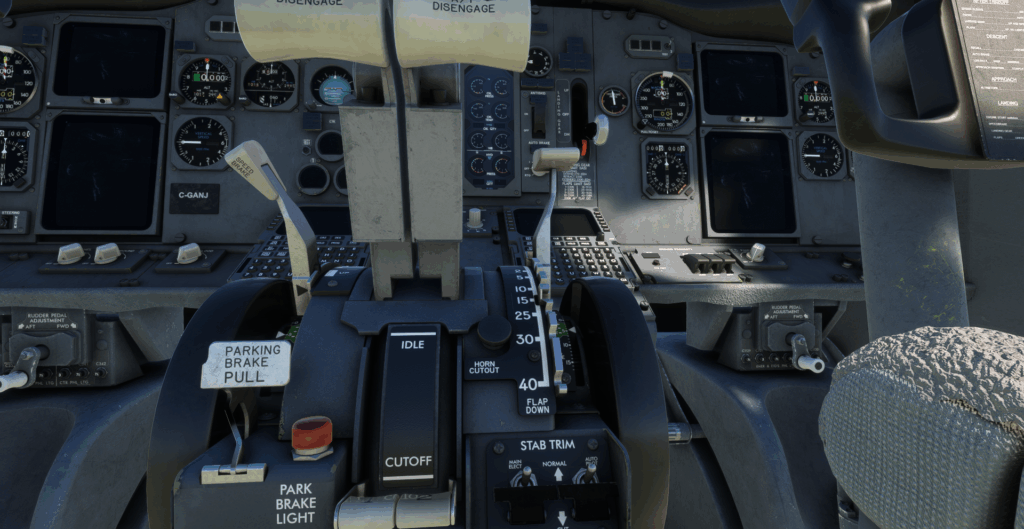
Back inside, the rest of the sounds are very simplistic. Every switch sounds the same, every knob sounds the same, every button sounds the same, and the levers all have the same sounds as the switches. The stick shaker sounds are present, but they don’t activate when the plane is close to or in a stall, only when using the test switch.
The distinctive 737 trim wheel sliding sounds are there, but when making small corrections, you’ll often hear this sound go on for way after you’ve stopped adjusting the trim. There are also no touchdown sounds, and although there is airframe wind and gear drag noise, the rumbly noise from drag when the speedbrakes are deployed is not there. Again, very disappointing for an add-on releasing today and at this price range.
Performance
I was away from my usual setup during this review, so my laptop with a Ryzen 5 7535HS, RTX 2050 4GB, and 16GB of RAM would have to do. I know these specs may not seem impressive, especially for MSFS, but it does run the sim at between 30 and 40 fps, even with payware aircraft and scenery.
With that being said, the performance of this aircraft was worse than I expected. In my testing, I was hitting between 25 and 30 fps, even in cruise. Usually, the performance was fine up until I had every system up and running, at which point it would drop around 5 fps from what it was when the aircraft was cold and dark.
To compare, I loaded up the CSS 737 and a few other comparable aircraft from PMDG and iniBuilds at the same airport, where I got between 5-10 FPS less in the CSS 737 than in the other aircraft. This performance difference is surprising, considering that the 737 Classic is an older and less complex aircraft, which usually tend to perform better than the modern airliners in the sim.
Pricing
Perhaps the single most controversial aspect of the CSS 737-500 is the pricing model the developers have chosen for it. What they call the “unique sales model” is the option to purchase the CSS 737 and all its future expansions at either $5 a month, $50 a year, or $120 for a lifetime license. Users on Reddit, news websites, and CSS’s own Discord have expressed discontent with the idea of having to pay a subscription for their aircraft. Others have pointed out the “advantage” of being able to try it out for just $5 initially to see if you like it; however, I have some points of critique about this thinking and the sales model as a whole.
The problem is that, while subscription services make sense for perpetually changing services where you have access to a large library of goods, such as with movie and music streaming or AIRAC updates, I don’t think it makes any sense for a flight simulator aircraft. Sure, the developers may change the aircraft afterwards with feature and bug fixing updates, but the expectation and reality for every other add-on in this hobby is that bug fixes and feature updates are free, with the exception of updates requiring major work, which could be released as paid expansions.
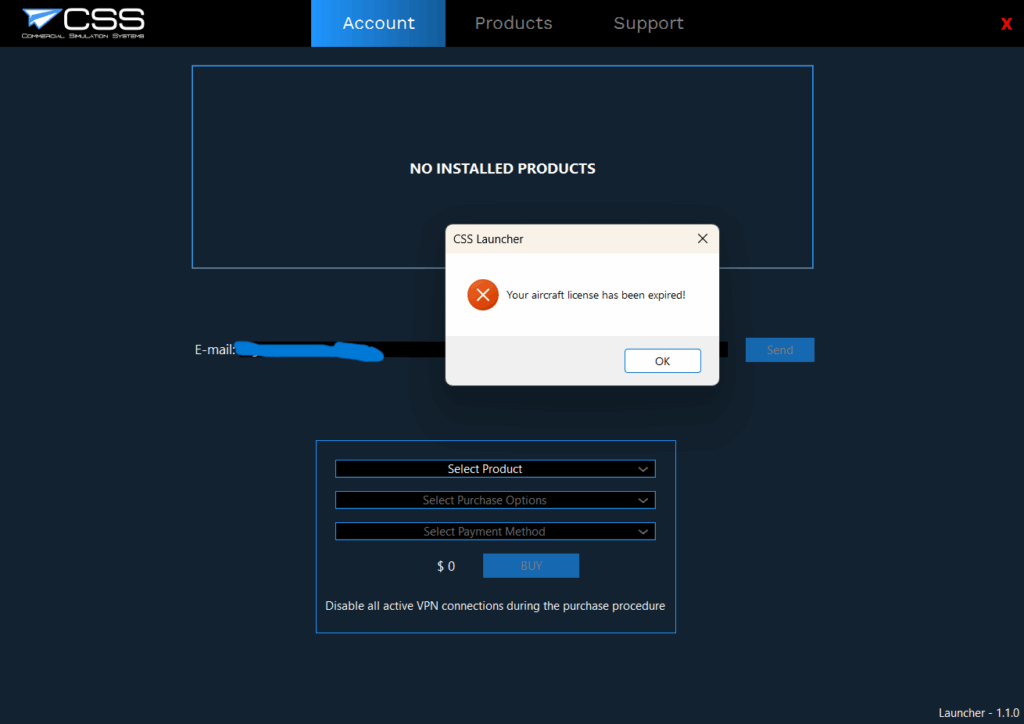
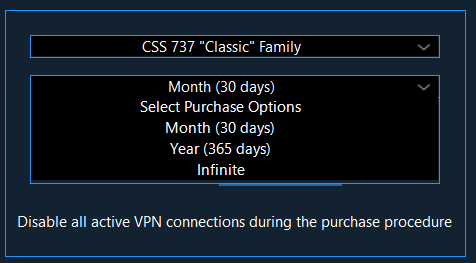
So, what’s the problem with being able to pay $5 to try it out? The problem is that you are paying more in the end for being a cautious buyer than if you were to buy the aircraft outright for $120. And it probably won’t be just $5 more; the CSS 737 is currently in a pretty rough shape, so if you paid $5 for the aircraft now, you’d probably want to wait until future updates, at which point you might pay $5 again to try it out and see if your problems with it had been fixed. Not satisfied? Just wait until the next update and “try it out” for just $5 again!
Does anyone remember when free trials in flight sim were a thing? Microsoft, of all companies, does. MSFS 2024’s marketplace features the ability for developers to allow free trials on their products, so you can try them out to see if you like them without spending a cent. Not only that, but you can also rent products for a certain amount so that you can try them out for longer. Although this renting feature may seem similar to what CSS is doing, the key difference with the marketplace’s implementation is that the price you pay to rent the product on it is subtracted from the final price, should you wish to buy it. This system serves as an example of a consumer-friendly way of achieving the same goals (for the consumer) as CSS’s “unique sales model.”
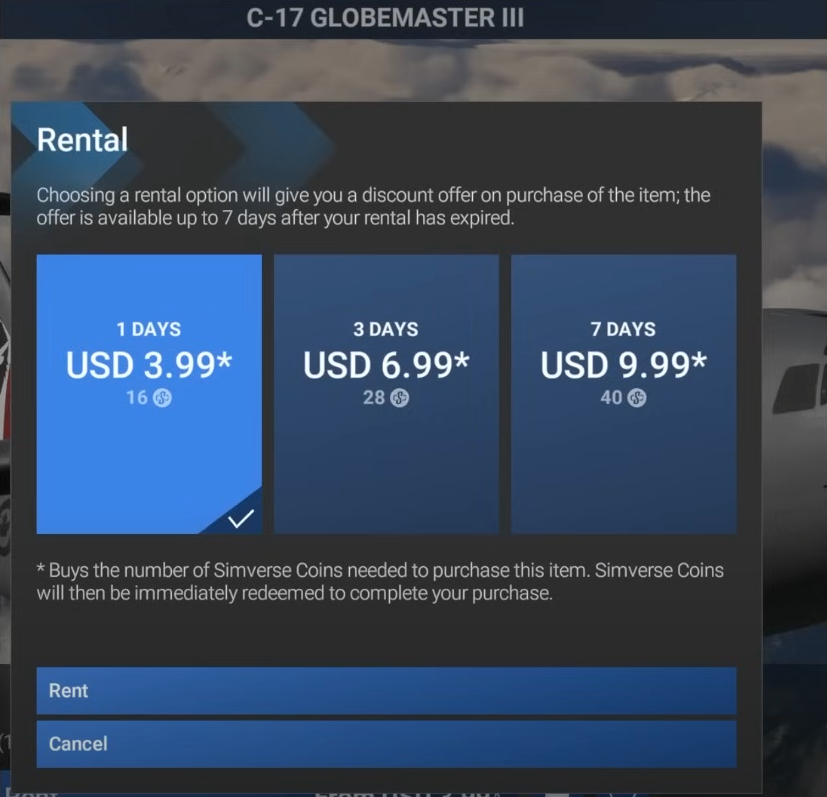
Don’t want the subscription? Just buy it outright, right? Well, where I come from, $120 is a lot of money, especially for a flight sim plane, and while that price is not unfair for all the variants it will eventually include, I also don’t usually buy every variant of every plane, at least not at once. So if I only wanted, for example, the 737-300, there is no purchasing option for me other than to spend the $120 to get them all at once, which, for many people, just isn’t possible. This lack of options leaves people who can’t afford the $120 price tag to either spend $5 a month for the rest of their flight simming lives or simply turn to piracy, a situation that, as someone who started out their flight sim journey as a kid living in a third-world country, I am all too familiar with. If developers care so much about reducing piracy, they must do better than this.
Conclusion
As a classic jet lover, I got into the CSS 737-500 with high hopes that one of the aircraft I had been hoping for in MSFS for such a long time was actually worth the wait. Instead, I was left disappointed with a lot of things in this aircraft. From the sounds, to the modeling, to the bugs, almost everything in this aircraft is below the expectations of an add-on released today. Aircraft fidelity means nothing if you can’t deliver an enjoyable product, and the CSS 737-500 has been okay at best and frustrating at worst.
The pricing model, in my opinion, is unnecessary and unfair to consumers. Those who choose to be cautious and try the aircraft for $5 with the intention of buying it end up paying more than those who take the leap of faith and dump $120 on a single aircraft and a bunch of promises from a developer with no public track record. This aircraft could cost you $120 as much as it could cost you $200 or more, so I will judge its value at the $120 price point.

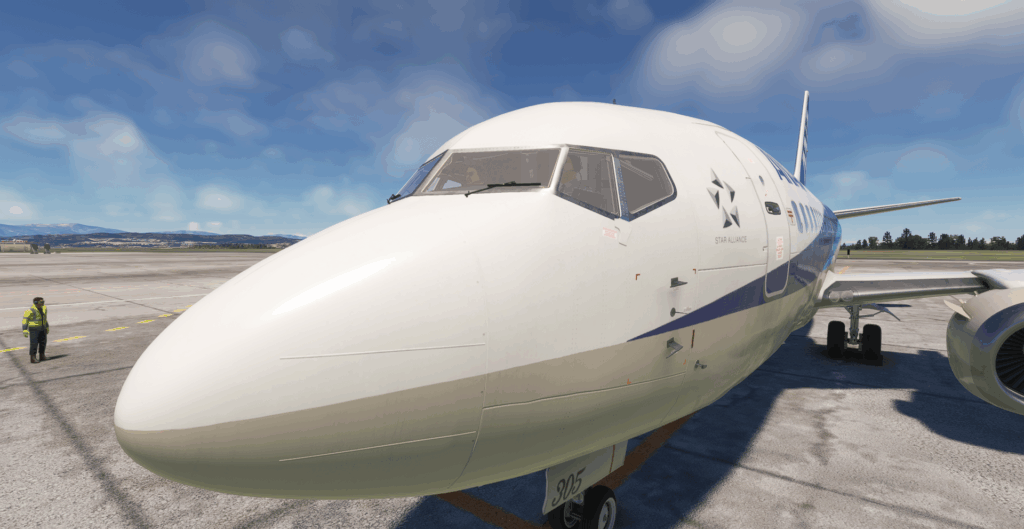
Keeping in mind that we must review aircraft as they are, and that even the developers themselves in their EULA mention that their products are sold “AS IS” (yes, I read it!), I am confident in saying that the CSS 737-500 offers the worst value of any aircraft product for MSFS as of now. If you are considering buying it, I can only suggest that you wait until it has been updated significantly and, if you plan on paying the full price, that you wait until the developers have released all the variants that are supposed to be included.
I must, however, also say that I think there is potential here for something better. The underlying systems of the aircraft don’t seem too bad, the developers are relatively active in their Discord server and have been listening to feedback, and they have also already talked about plans for future updates and shown progress of the models for the upcoming variants to be added. If this were a total scam, I don’t think they would have put as much effort into what’s already there.
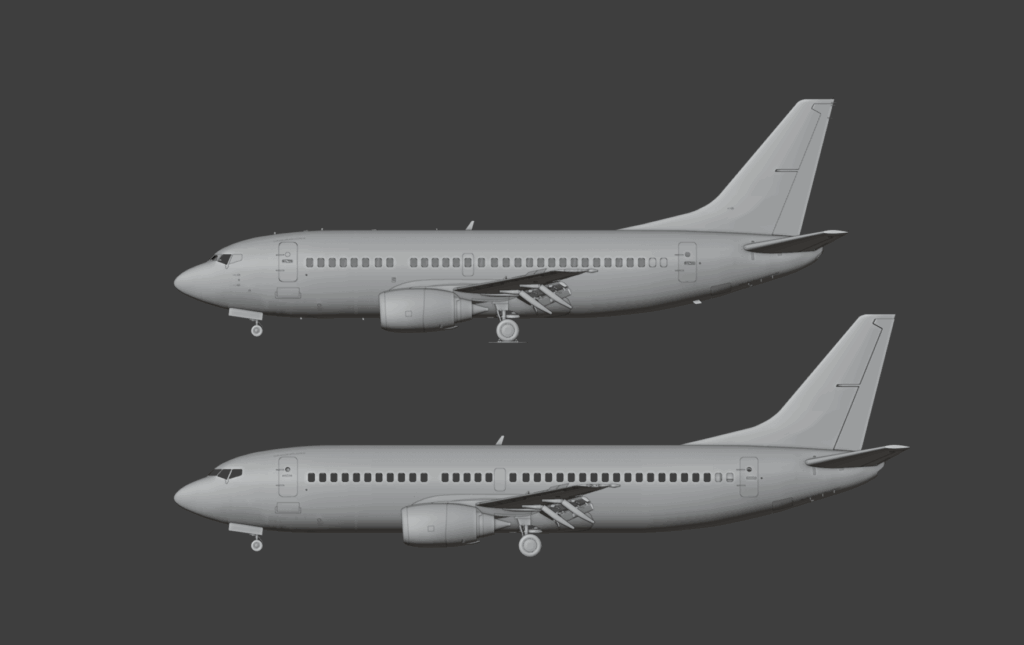
As harsh as I have been in this review, I do hope that CSS eventually succeeds in updating this aircraft to a state that the community can be happy with, so I will be keeping a very close eye on its development going forward. I expect to be back with a full, in-depth review once this aircraft has been updated to a more flyable state, which I hope won’t take more than a few months.
Feel free to join our Discord server to share your feedback on the article, screenshots from your flights or just chat with the rest of the team and the community. Click here to join the server.

